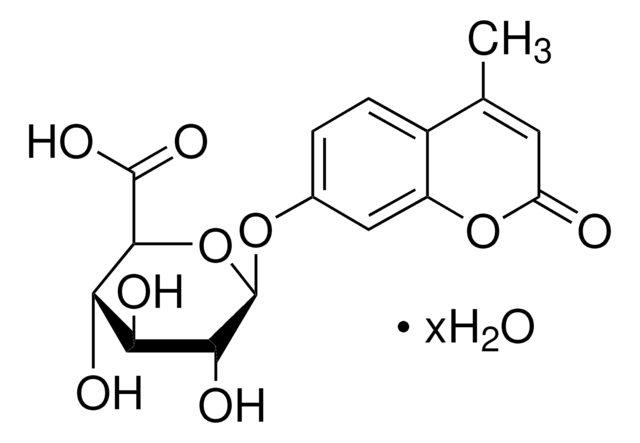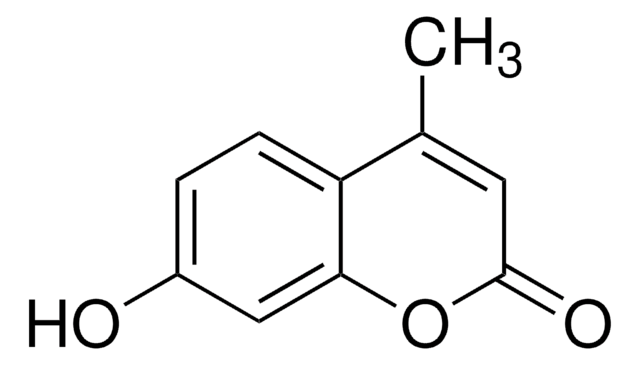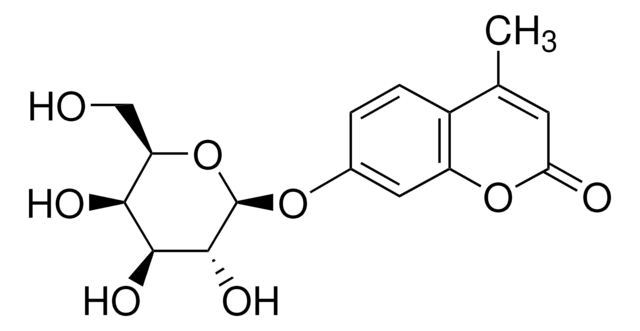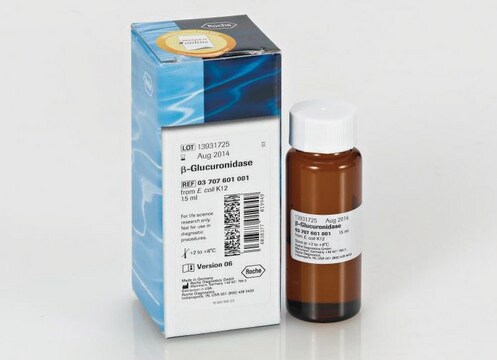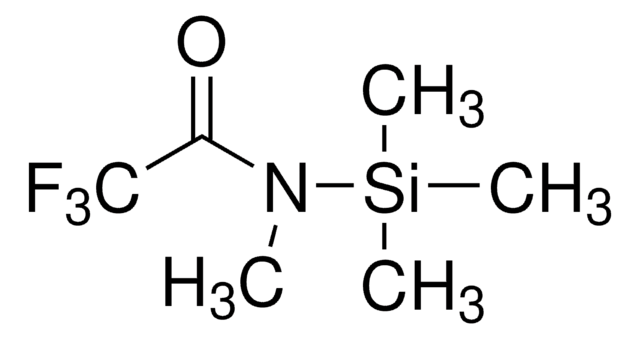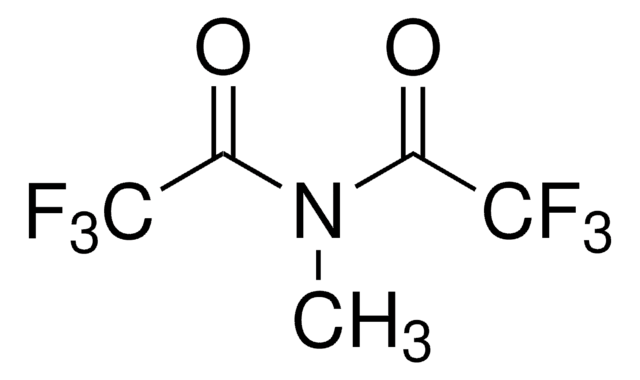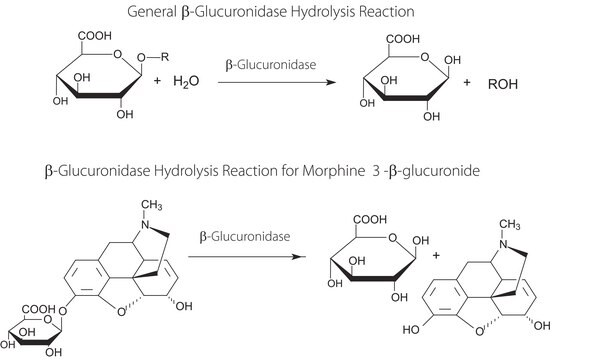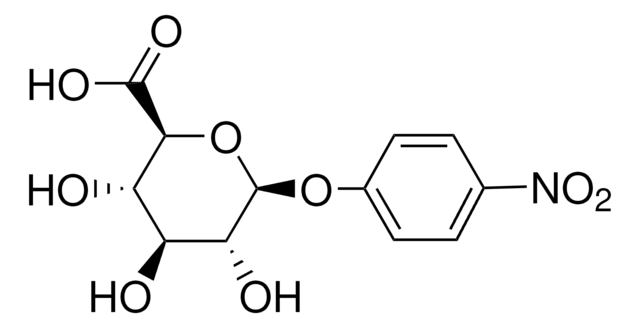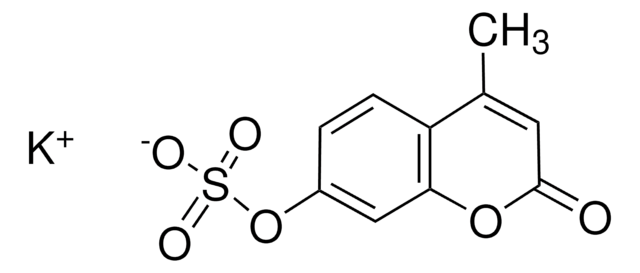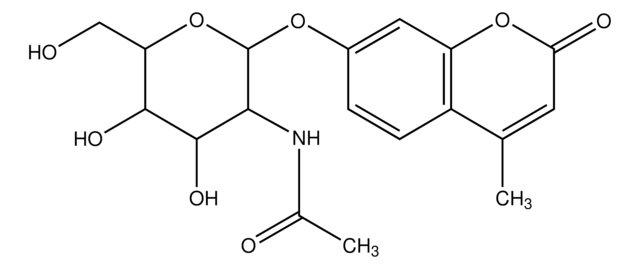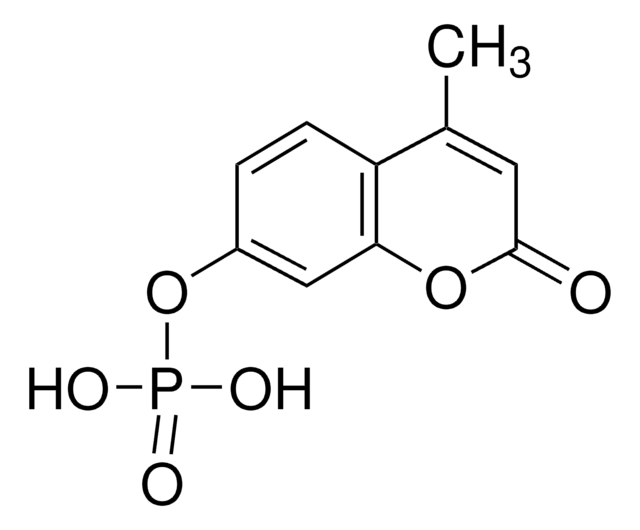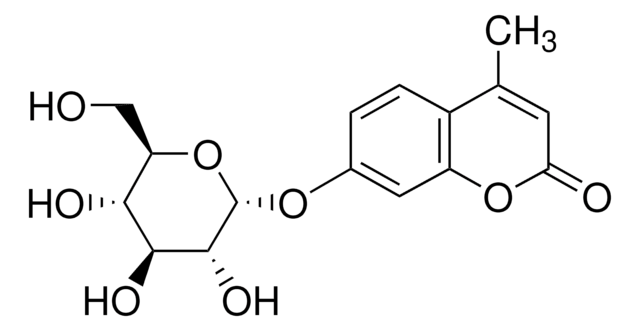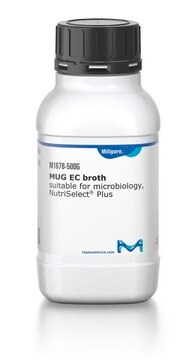M9130
4-Methylumbelliferyl-β-D-glucuronide hydrate
≥98% (HPLC), BioReagent, for identification of transformed plants
Sinônimo(s):
4-Methylumbelliferyl-β-D-glucopyranosiduronic acid, MUG
About This Item
Produtos recomendados
grau
Molecular Biology
for molecular biology
linha de produto
BioReagent
Ensaio
≥98% (HPLC)
Formulário
powder
solubilidade
pyridine: 50 mg/mL, clear, colorless to very faintly yellow
temperatura de armazenamento
−20°C
cadeia de caracteres SMILES
O.CC1=CC(=O)Oc2cc(O[C@@H]3O[C@@H]([C@@H](O)[C@H](O)[C@H]3O)C(O)=O)ccc12
InChI
1S/C16H16O9.H2O/c1-6-4-10(17)24-9-5-7(2-3-8(6)9)23-16-13(20)11(18)12(19)14(25-16)15(21)22;/h2-5,11-14,16,18-20H,1H3,(H,21,22);1H2/t11-,12-,13+,14-,16+;/m0./s1
chave InChI
URVSQZMOFUEQAW-YYHOVTOASA-N
Procurando produtos similares? Visita Guia de comparação de produtos
Descrição geral
Aplicação
Reconstituição
produto relacionado
Código de classe de armazenamento
11 - Combustible Solids
Classe de risco de água (WGK)
WGK 3
Ponto de fulgor (°F)
Not applicable
Ponto de fulgor (°C)
Not applicable
Equipamento de proteção individual
Eyeshields, Gloves, type N95 (US)
Escolha uma das versões mais recentes:
Já possui este produto?
Encontre a documentação dos produtos que você adquiriu recentemente na biblioteca de documentos.
Os clientes também visualizaram
Artigos
Today, diverse studies report the benefits of probiotics, such as inhibitory effects on pathogens, aid in the management or prevention of chronic intestinal inflammatory diseases or atopic syndromes, and support to the immune system. Potential beneficial applications abound, researchers continue to evaluate the effictiveness and clarify the mechanisms of action of probiotics.
Nossa equipe de cientistas tem experiência em todas as áreas de pesquisa, incluindo Life Sciences, ciência de materiais, síntese química, cromatografia, química analítica e muitas outras.
Entre em contato com a assistência técnica